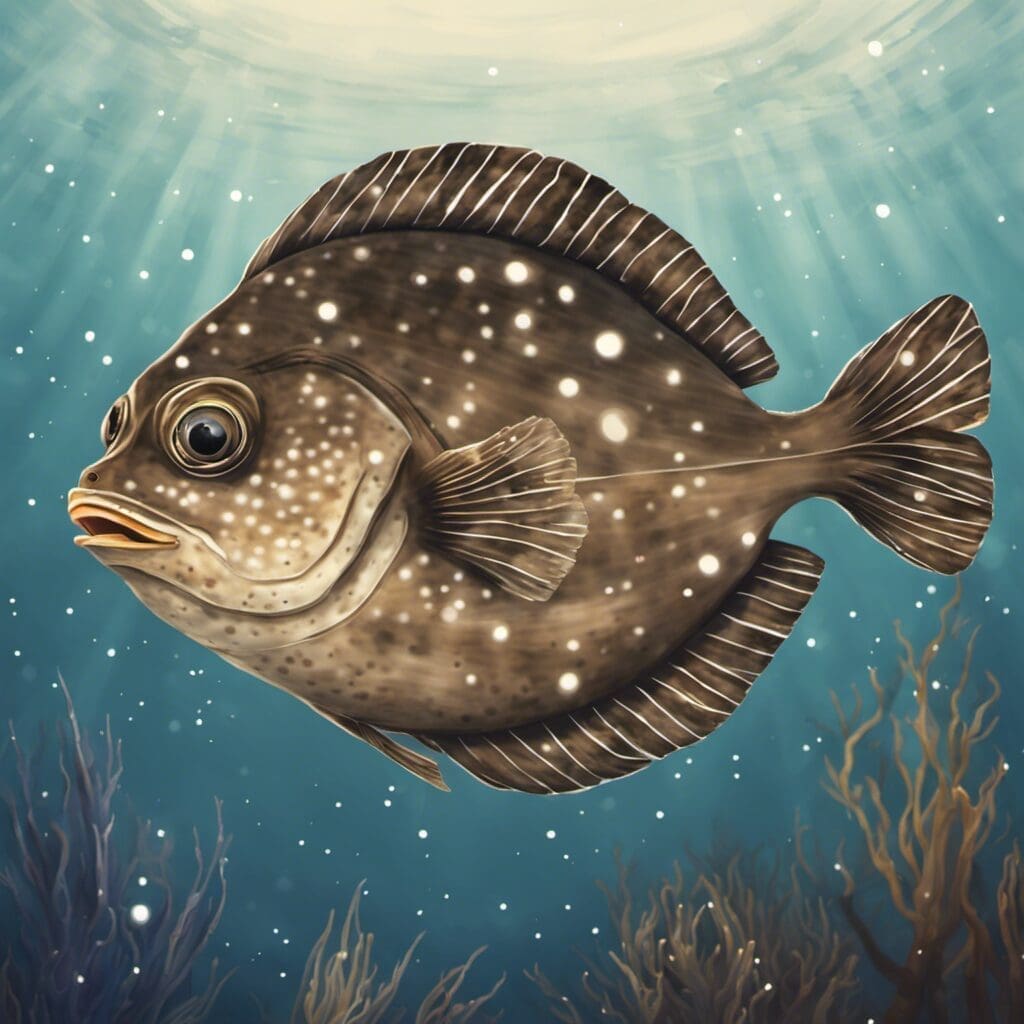Introduction
The Starry Flounder (Platichthys stellatus) is a beautiful fish from the flatfish family, Plueronectidae.
Conservation Status
Starry Flounder is not considered endangered or threatened. Conservation efforts focus on maintaining healthy aquatic environments that support robust populations.
Statistics
| Statistic | Average | Range |
|---|---|---|
| Length | 60 cm | 30 – 91 cm |
| Weight | 3.4 kg | 1 - 9.1 kg |
| Average Lifespan | 20 years | N/A |
Distribution
Starry Flounder are found in the northern Pacific Ocean, from Japan to California, and from Alaska to the Bering Sea. They are not known to engage in extensive migrations.
Habitats
These flatfish prefer coastal waters near sandy or muddy bottoms. They can exist in depths from the shallows to about 375 m, and tolerate a temperature range from -1.8°C to 22°C.
When and Where to See
Primarily nocturnal, Starry Flounder are most active at dusk and dawn. Although they can be seen year-round, they are most easily spotted in late spring and summer.
Best Fishing Locations
Top spots for catching Starry Flounder include:
- Sitka, Alaska
- Bristol Bay, Alaska
- Prince William Sound, Alaska
- Monterey Bay, California
- San Francisco Bay, California
- Humboldt Bay, California
- Tillamook Bay, Oregon
- Yokohama Bay, Japan
- Kujukuri Beach, Japan
- Sakhalin Island, Russia
How to Catch
The top lure for Starry Flounder fishing is cut bait, preferably of a local prey species. Bottom fishing techniques tend to be the most successful. Late spring to summer is typically the best time for fishing.
Identification Guide
Starry Flounder are dark brown to black with numerous white to orange spots. Their shape is distinctly flat with both eyes on the right side of the body. Comparatively, they have rougher skin than most other flatfish.
Culinary
Starry Flounder is noted for its mild, sweet flavor, and buttery texture. It can be baked, broiled, grilled, or lightly sautéed. Nutritionally, it is a good source of protein, vitamins B6 and B12, and selenium.
Additional Information
Starry Flounder feed primarily on crustaceans and other small sea creatures. They are preyed upon by larger fish and marine mammals. While there is no known significant historical or cultural significance, their widespread presence makes them important for recreational and commercial fishing.
References and Further Reading
Sources:
- Fishbase
- Aquarium of the Pacific
- Alaska Department of Fish and Game
Recommended reading:

